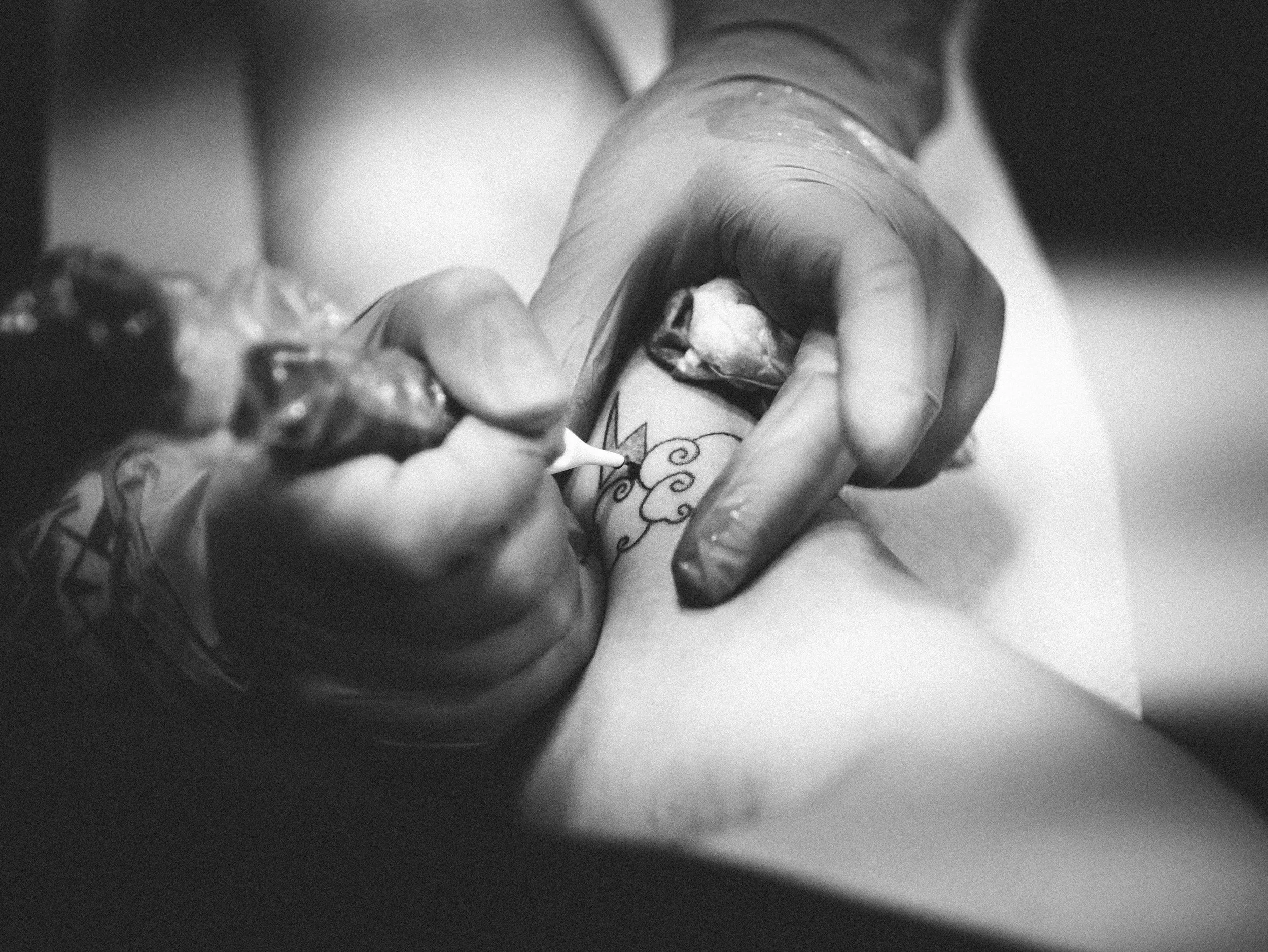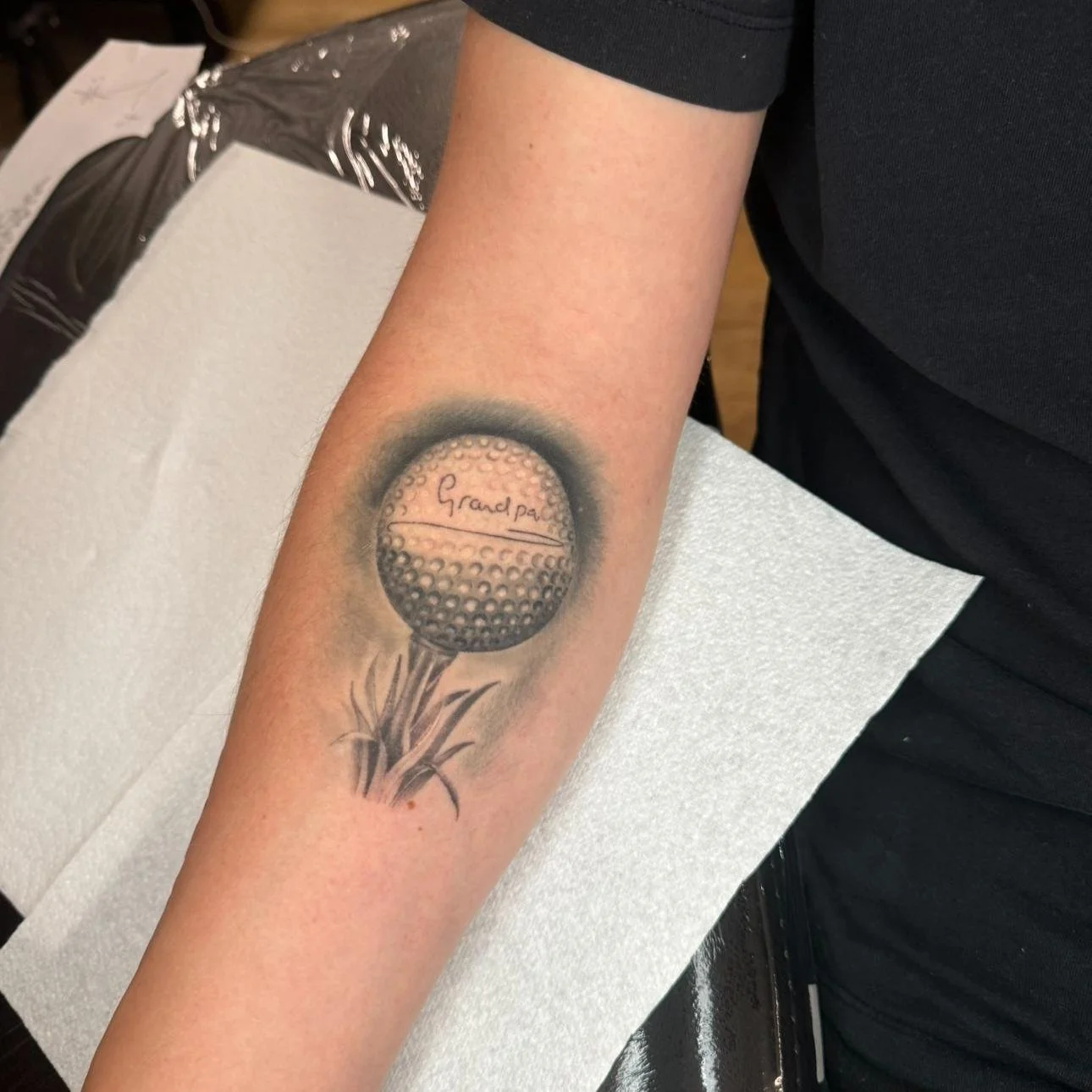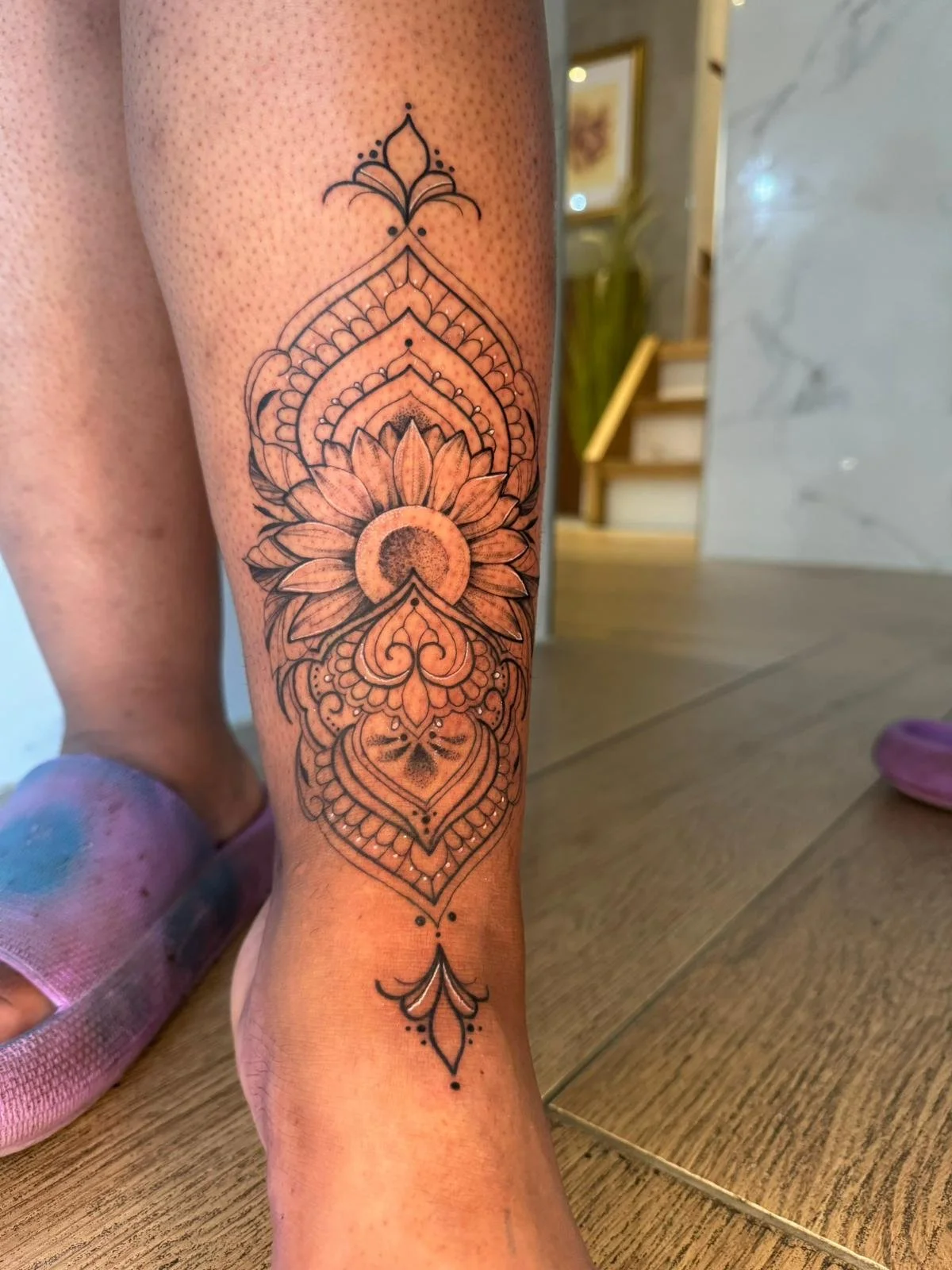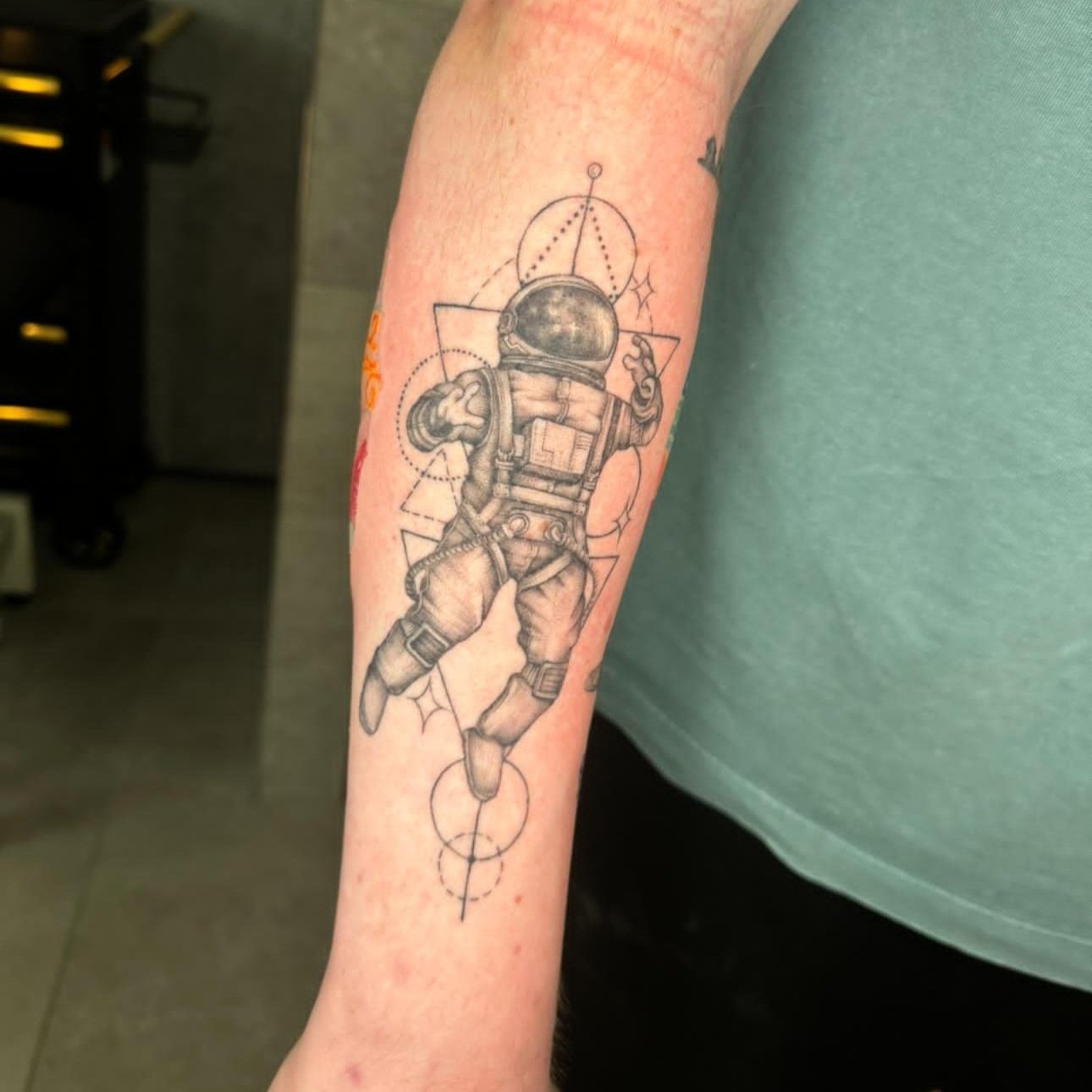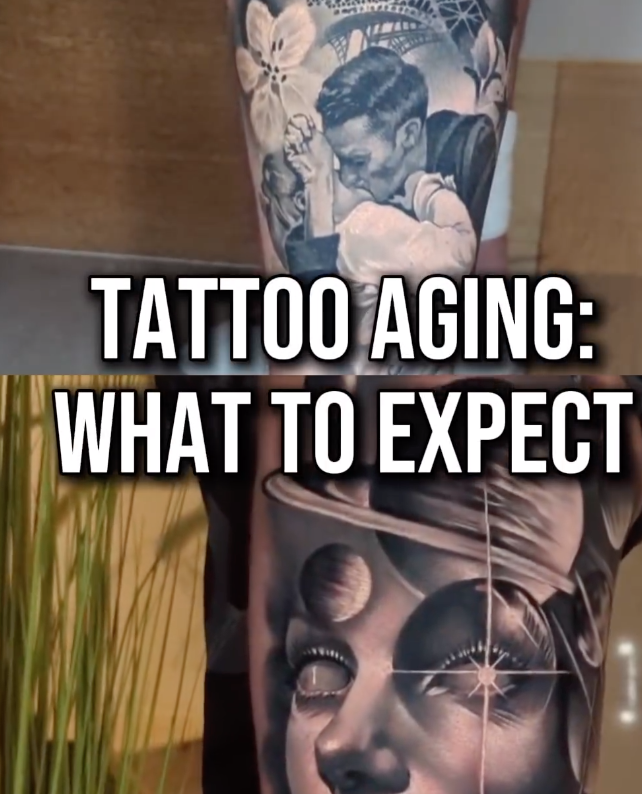The Reality of Tattoo Aging: What to Expect Over the Years
The Science of Tattoo Aging
Ink and Skin Interaction:
Tattoos are created by depositing ink into the dermis, the second layer of skin. As your skin regenerates, the epidermis (the top layer) sheds, but the ink remains in the dermis. Over time, this process, along with the natural aging of your skin, causes changes in how your tattoo appears.
Skin Changes Over Time:
As you age, your skin loses elasticity, becomes thinner, and may develop wrinkles. These changes can affect the appearance of your tattoo, causing it to stretch, fade, or blur. Additionally, exposure to environmental factors like sunlight can accelerate these changes.
Katie J Healed tattoo
Factors That Influence Tattoo Aging
Tattoo Placement:
Areas of the body that experience more movement, friction, or sun exposure tend to age tattoos faster. For example, tattoos on hands, feet, and joints may fade and blur more quickly than those on areas like the upper arm or back.
Fresh tattoo by Katie J
Ink Quality and Color:
The quality of the ink used and the colors chosen can impact how a tattoo ages. Black and dark-colored inks tend to hold up better over time, while lighter colors like yellow, white, and pastel shades may fade more quickly.
Tattoo Artist's Skill:
The precision of your tattoo artist plays a crucial role in how well your tattoo will age. Fine lines and intricate details may blur over time, so choosing an experienced artist who understands the aging process is essential.
Healed Tattoo by Katie J
Common Changes in Tattoos Over Time
Fading:
Over time, all tattoos will experience some degree of fading. This is largely due to the breakdown of pigments and the natural exfoliation of the skin. Sun exposure is one of the biggest culprits, as UV rays can break down the ink particles, causing them to fade.
Blurring and Spreading:
As your skin ages and loses elasticity, the ink can begin to spread, causing the lines of your tattoo to blur. This is especially common in areas with thinner skin or where the tattoo is subjected to constant movement or friction.
Color Changes:
Certain ink colors may change over time. For example, black ink can turn to a bluish or greenish hue, while red can fade to pink or orange. This color shift is often a result of the ink particles breaking down and being absorbed by the body.
Glen Carloss
How to Minimize Tattoo Aging
Sun Protection:
Protecting your tattoo from the sun is one of the best ways to prevent fading. Always apply a high SPF sunscreen to your tattooed areas when exposed to sunlight.
Moisturizing:
Keeping your skin well-hydrated can help maintain its elasticity, reducing the risk of your tattoo stretching or blurring. Regularly applying a moisturizer to your tattooed skin can keep it looking vibrant.
Healthy Lifestyle:
A healthy lifestyle, including staying hydrated, eating a balanced diet, and avoiding smoking, can contribute to the overall health of your skin and slow down the aging process.
Touch-Ups:
Over time, you may need to get your tattoo touched up to restore its original vibrancy and detail. A skilled artist can refresh faded colors and sharpen blurred lines.
Katie J
If you wish to learn more feel free to check out out newest video on instagram which explains everything in detail!
Tattoos are a lifelong commitment, and understanding how they age is an important part of maintaining their beauty. While the effects of aging are inevitable, there are steps you can take to keep your ink looking great for years to come. By choosing the right artist, caring for your skin, and protecting your tattoo from the elements, you can ensure that your tattoo remains a lasting and cherished piece of art.
If you have any questions about tattoo aging or want to share your own experiences, feel free to leave a comment below. And don’t forget to subscribe to our blog for more tips on tattoo care and design inspiration!
